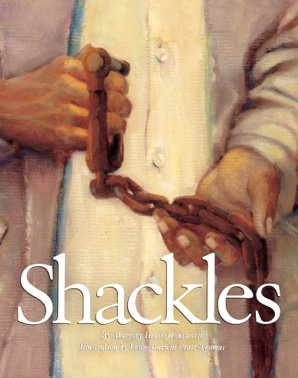Please see our Fall 2025 Newsletter
Newsletter Sept 2025 by librarians

October 5-11 is Banned Books Week, and Thomas Library has a display near the door featuring several books that have been banned (or challenged) in the United States in recent years.

Included in the display is a book called Shackles, written by New York Times bestselling author Marjory Wentworth, who also happens to be the Director of the Writing Center here at Wittenberg University.

Marjory joins Thomas Library director Amanda McLellan and Clark County Public Library Director Bill Martino in a panel discussion following a viewing of the documentary Banned Together at the main branch of CCPL on Wednesday October 8th.
Thomas Library encourages you to check out the display, and practice your freedom to read.
Read more:


The voting is now open! Cast your vote for your favorite name https://forms.cloud.microsoft/r/axPScaM1xw
Your options are:
Voting closes September 24th, and winner will be announced on September 25th!

Have you met our robotic therapy cat? It lives in our new sensory-friendly study room on the 3rd floor, near the back side of the elevator. It's rechargeable , and will purr and meow when you pet it. But! It needs a name! Submit your ideas here https://forms.cloud.microsoft/r/yuWu32MP7Y and we'll open a vote starting Sept 17th.

Several of our student employees were recently recognized for their academic achievements and contributions to the Wittenberg community. We joyfully congratulate these students on their accomplishments.
Izabel Giglio - recipient of the William A. Kinnison Scholarship
Rosalee Jones - S. Paul & Clara M. Weaver Endowed Scholarship
Dimitri Gonzalez - Faculty Award for Outstanding Achievement in Biology/Environmental Sciences
Benjamin Woxman - Biology/Environmental Science/Biochemistry and Molecular Biology Senior Fellows
Aleksandra Slenk - Laurels in Communication
Abbie Hogsett - The Thárros Award
Charity Perry - Barbara Steel Kane Memorial Award
Abigail Eckman - Kurt. J. Fickert Award
Abigail Alcorn - Sigma Tau Delta
Charity Perry - Alpha Alpha Alpha
Dimitri Gonzalez

This summer, Thomas Library, along with all OhioLINK libaries, is adopting a new state-wide platform. This will impact all online interactions with the library, including searching for and accessing resources, placing holds and checking out materials, requesting items from OhioLINK and inter-library loan, placing items on reserve, and ordering materials.
As of today, we are officially in what is called a “technical freeze” which means we stopped doing all the behind-the-scenes work in our existing system. This doesn't really impact how you use the library, for example, you can still check out items, it just means we are not currently buying and adding new things.
We have put together a guide to help answer any questions you might have, and let you know how you will be impacted as we go through this systems change.
We asked for your votes, and you selected the new library logo!

In total, 155 votes came in, and the laptop tiger had a total of 65. The second place was option 1, the more "serious" tiger reading.
We'll be placing the logo on our website and print-outs in the coming weeks. What swag would you like to see it on?

Several of our student workers recently presented at the Wittenberg Honors Undergraduate Research Symposium and the Connections Symposium. We congratulate each of them on their academic achievements.
Audrey Ishimwe Simbi presented her poster, "How You See Yourself, Social Media's Impact on the College Student."
Emily Randall performed with the a cappella group, Just Eve, selections from their spring concert.
Zoe Hale presented her thesis, "Facing Trauma and Writing Alternative Endings in Margaret Cavendish's Belle in Campo (1662) and The Blazing World (1666)."
Cami Duncan presented her paper, "Traditional Women's Film Paradigms in Thelma and Louise."
Michael Vrbanac presented his research, "Factors Influencing Capture Rates of Spotted Turtles in a Southwestern Ohio Fen."
Kyngston Collins presented a poster, "Time Management Interventions for College Students" with fellow student, Angela Hong.
Brynn Cunningham presented a poster, "Reframing College Drinking Behaviors" with Daniel Patel and Kaulana Smith.
Abby Lanhart, Kassady Thompson, and Austin Petersen presented a poster, "Measuring Anxiety Across Mouse Handling Methods: Old vs. Refined" alongside their group members, Ethan Libby, Lexi Repp, Brooke Mullis, Izzy Thompson, and Noelle Underwood.
Audrey Ishimwe Simbi presented her poster, "Optimizing Length of Stay in Inpatient Hospital Units."
Congratulation to all who presented. We can't wait to see what you do next!

Several of our student employees were recently recognized for their academic achievements and contributions to the Wittenberg community. We joyfully congratulate these students on their accomplishments.
Abby Alcorn
Sigma Tau Delta
Tori Banks
Alpha Alpha Alpha
Brynn Cunningham
University Honors
T. Edwin Boling Sociology Scholarship Award
Alpha Kappa Delta
Dimitri Gonzalez
Biology and Environmental Science Senior Fellow
Chi Alpha Sigma
Grace Koperna
Biology and Environmental Science Senior Fellow
Chi Alpha Sigma
Aleksandra Slenk
Lambda Pi Eta
Racheal Vargo
Margaret S. Ermarth Award
Michael Vrbanac
Beta Beta Beta
Emmett Bodenberg Award for Outstanding Achievement in Environmental Biology
Clarissa Beard
Women's Studies Writing Award -- Honorable Mention
Nicole Contenza
Lambda Pi Eta
Tau Pi Phi
Audrey Ishimwe Simbi
Sigma Theta Tau
University Honors
Everyone at Thomas Library extends our congratulations to these students and to everyone recognized at the Honors Convocation.
